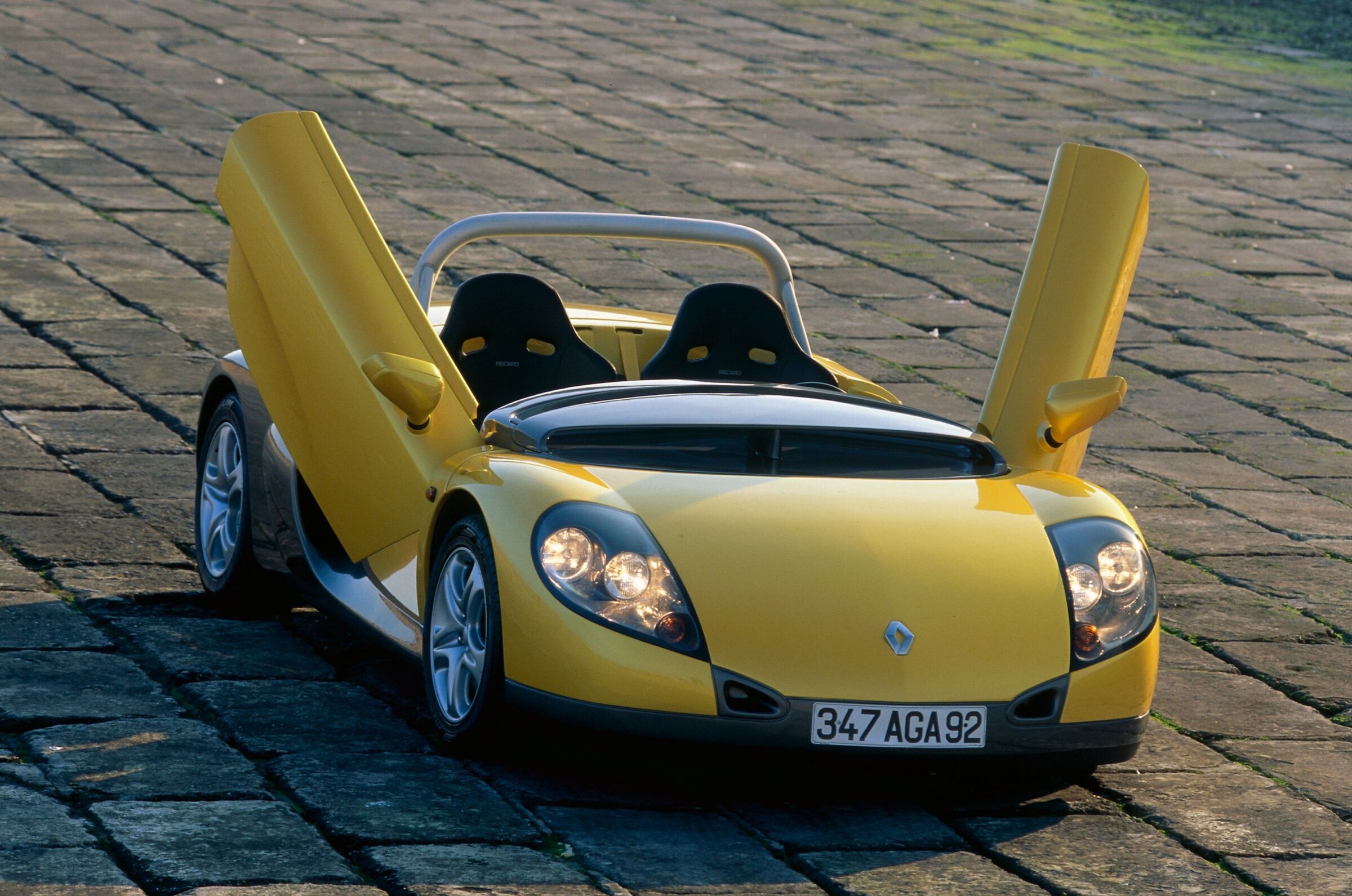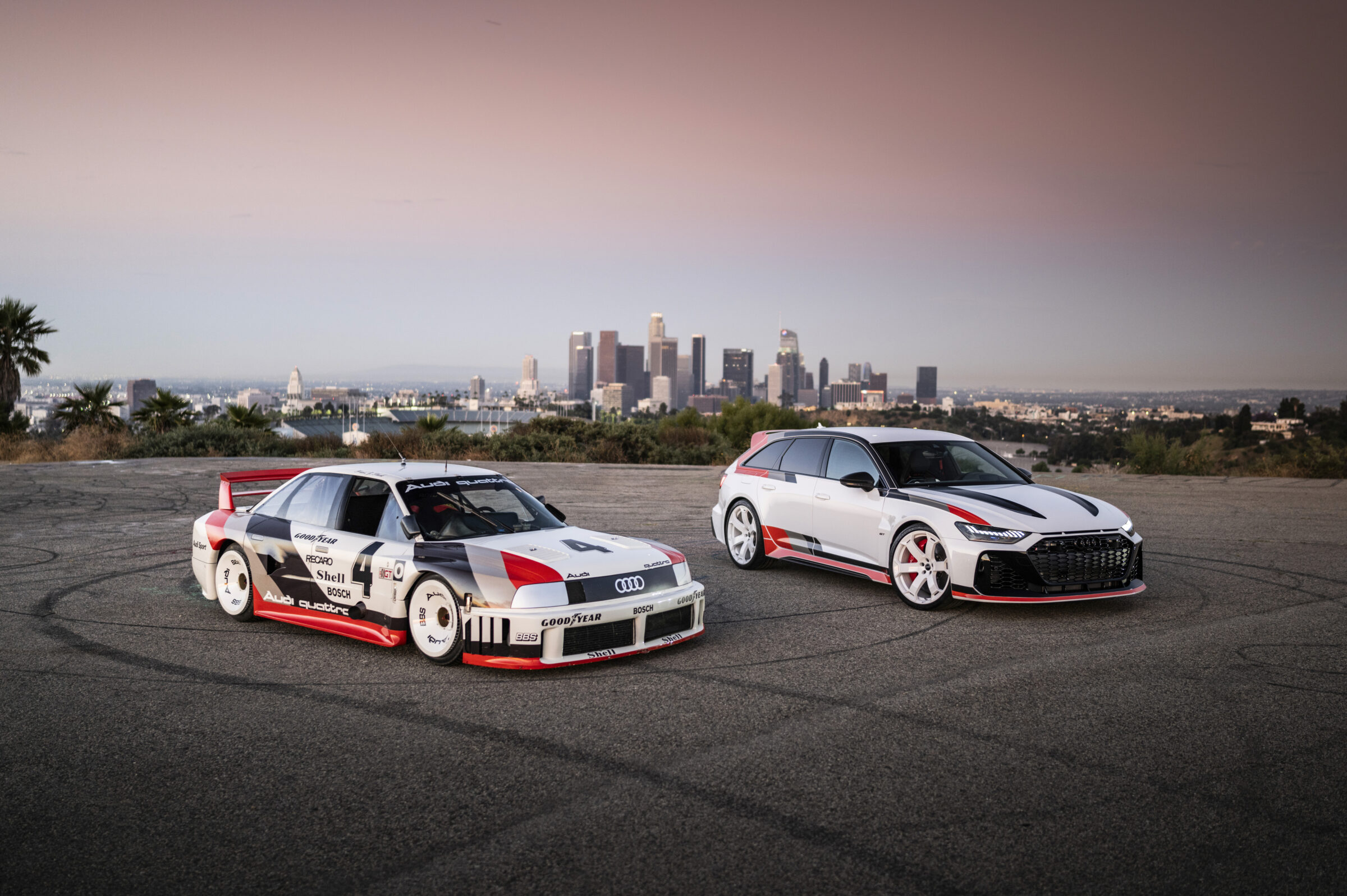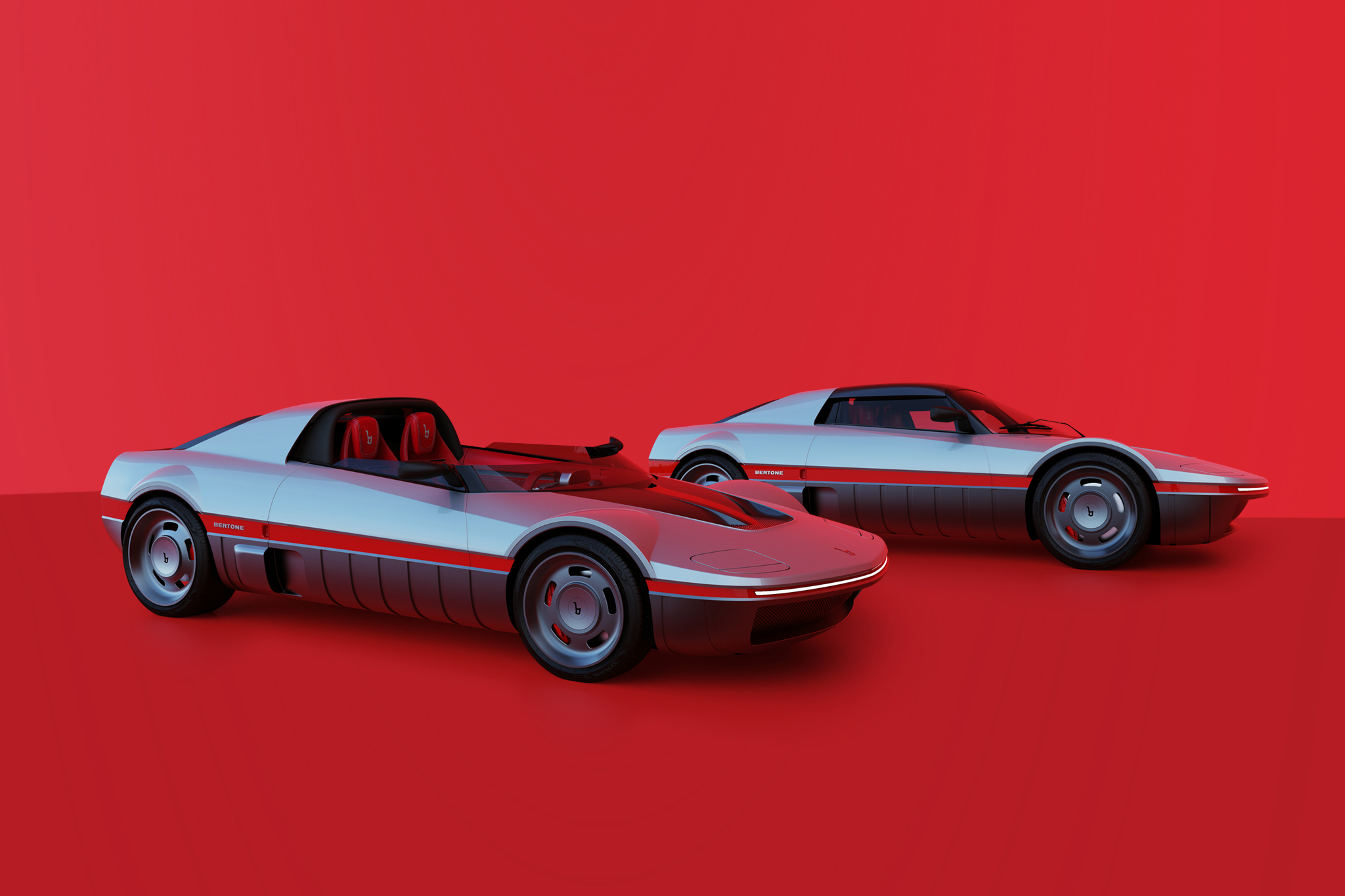Toyota MR2
Actually, the Toyota Collection in Cologne/Germany wanted to feature the mid-engine sports car MR2 at their upcoming public opening on Saturday, April 4. However, this free opportunity to visit the largest collection of Toyota vehicles outside Japan is cancelled due to the current Corona pandemic. For us, this is a good reason to focus on the popular sports car, which has been produced for 23 years, in our online magazine. Although this means that there is no direct contact with the vehicle, and we are unfortunately unable to include the expert opinions that would have been expressed in Cologne, we make every effort to include as many interesting facts of this model as possible.
Toyota began with the preliminary work on the first mid-engine vehicle from Japanese production as early as 1976, and the aim was to create a superior product in this category as well, with a design that would fit the times as well as possible. The wedge shape they decided for in 1979 was already familiar to car fans from other sports cars such as the Lotus Esprit. In 1983 the mid-engine sports car made its debut as the SV-3 Concept at the Tokyo Motor Show. However, it took over a year before production started in November 1984. In other countries, comparable sports cars had been around for a relatively long time, such as the Porsche 914 or the Fiat X1/9. Both of which had a feature that was also optionally taken up for the Japanese car called ‘MR2’: a removable targa roof. However, the actually closed Coupé version received a removable glass roof part as standard in Europe from 1985. The model abbreviation MR2 officially stands for ‘Midship Runabout Two-Seater’, but in some sources there is also the meaning ‘Mid-engined Rear-wheel drive Two-seater’. Since ‘MR2’ would have become critical in French-speaking areas because of the readings ‘merde’ (shit) or ‘merdeux’ (snotty), only the abbreviation ‘MR’ was used as a model name there.
Technically, Toyota would theoretically have had to use the existing models in their parts shelf. But then the MR2 wouldn’t have become a mid-engine vehicle. Instead, Akio Yoshida, after various experiments, developed an independent chassis with rear-wheel drive, into which some components, for example from the then current Corolla generation, could be integrated. Roger Becker, engineer at Lotus, helped with the chassis tuning. The first prototype was named SA-X and stood on its wheels in 1981 to be tested extensively by experts such as Formula 1 racer Dan Gurney.
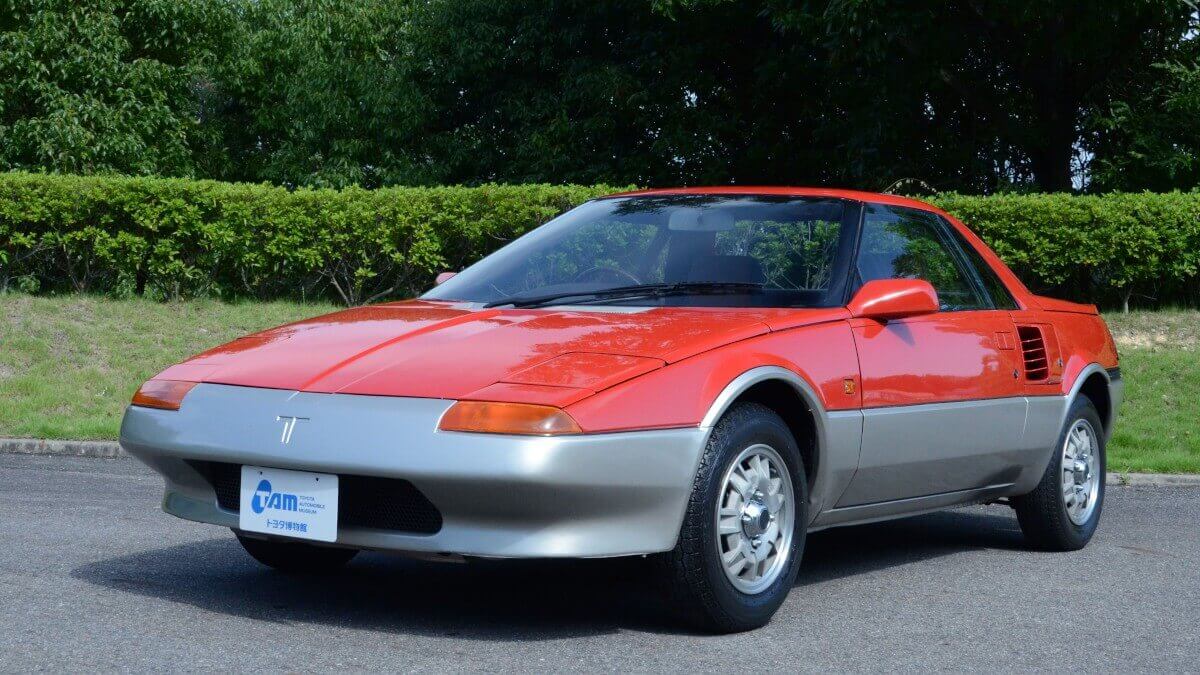



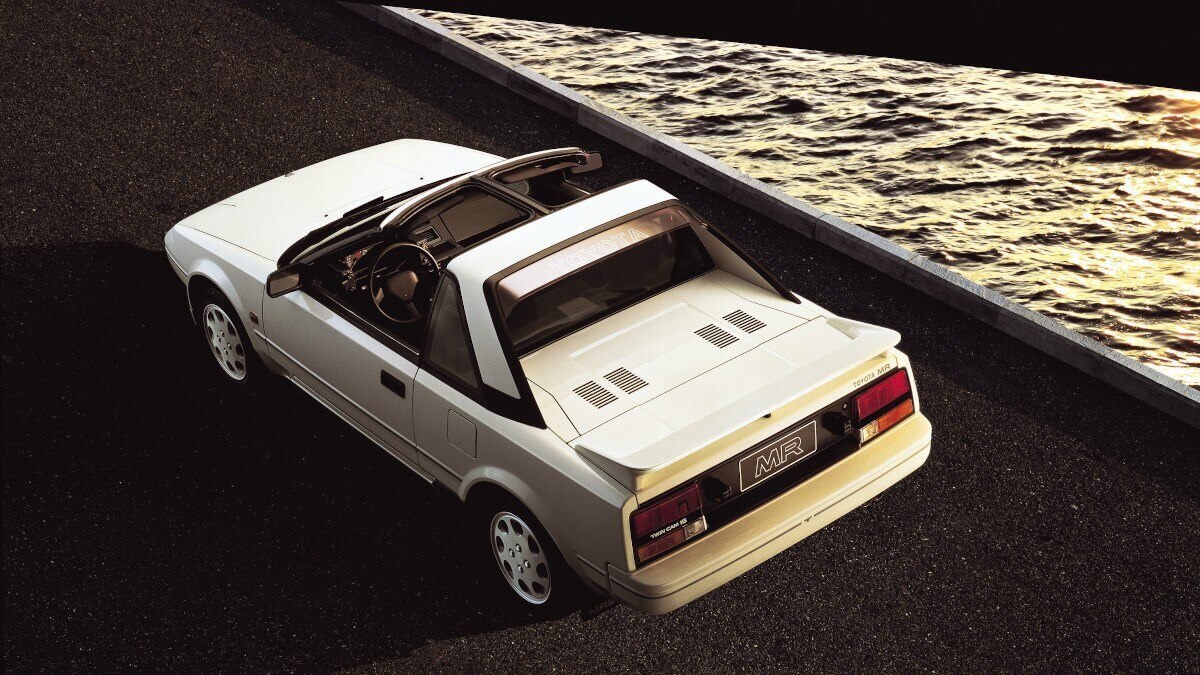







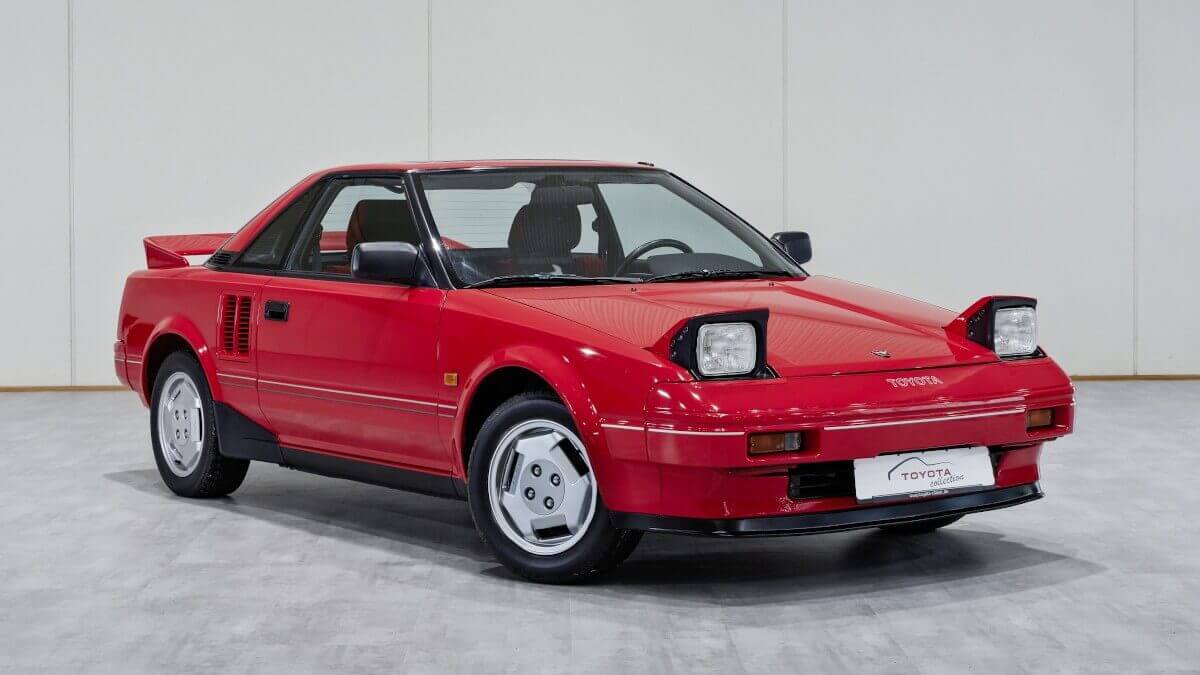



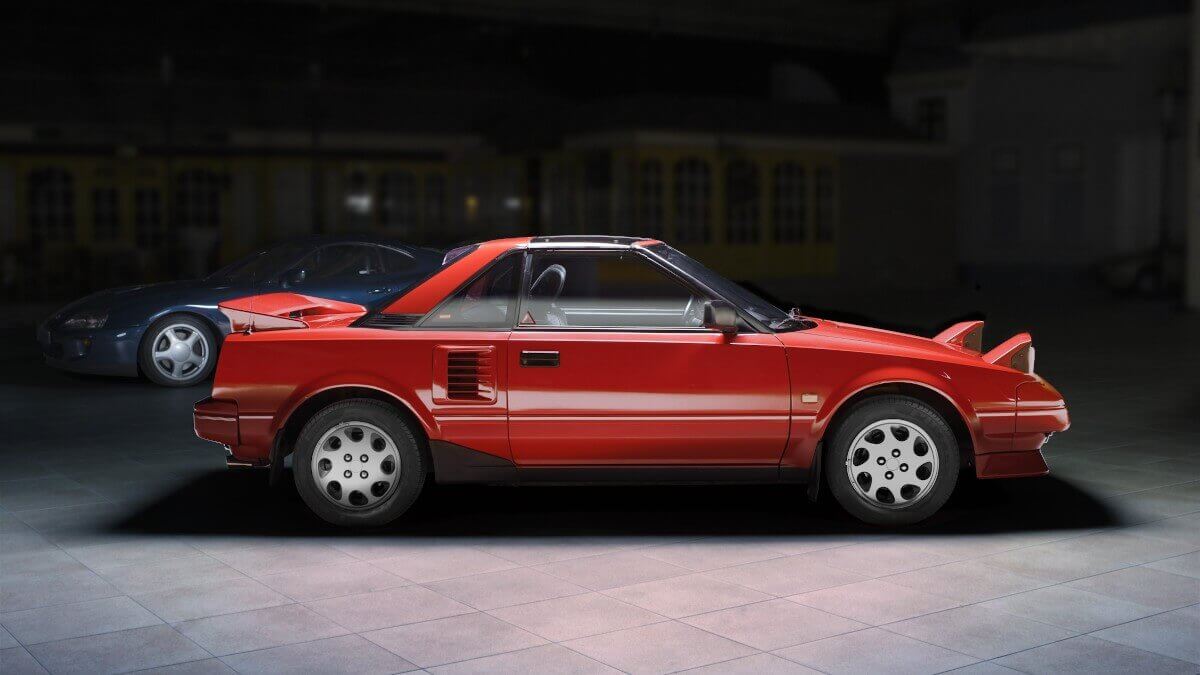





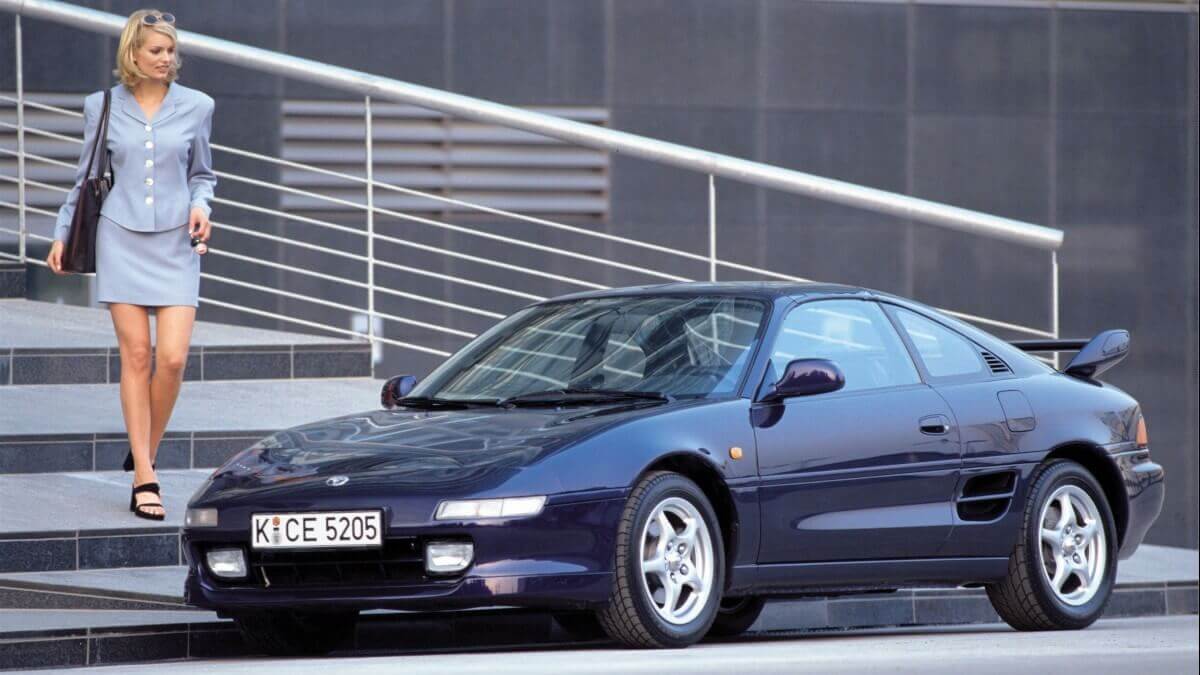





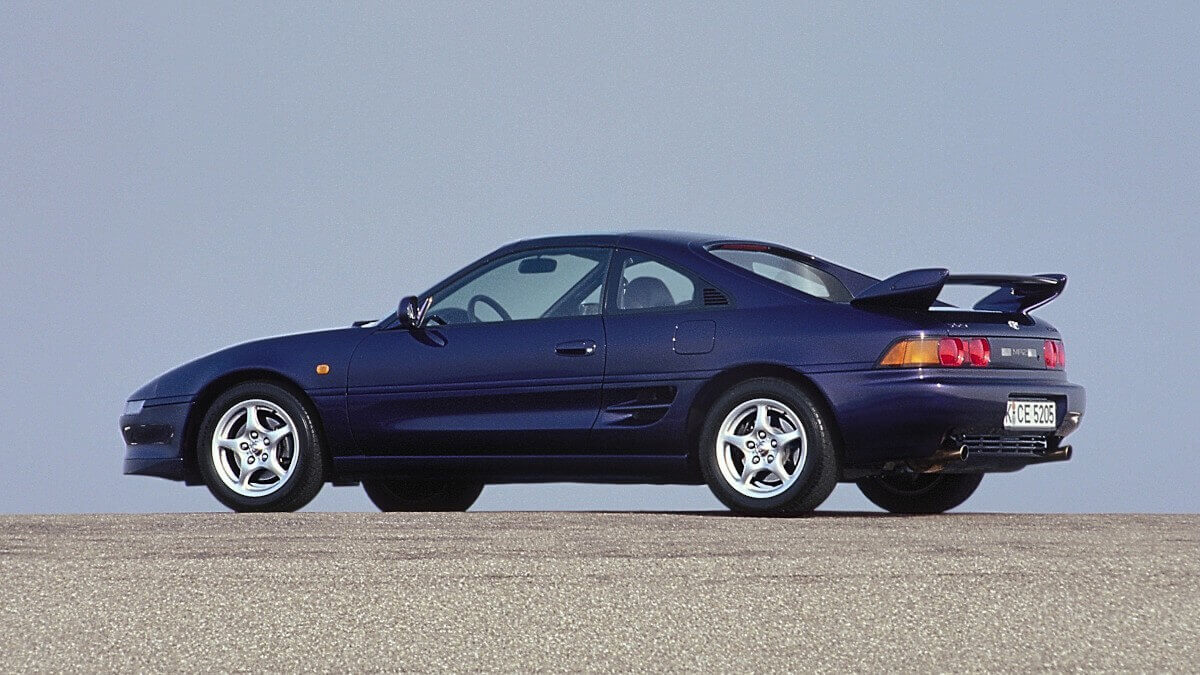

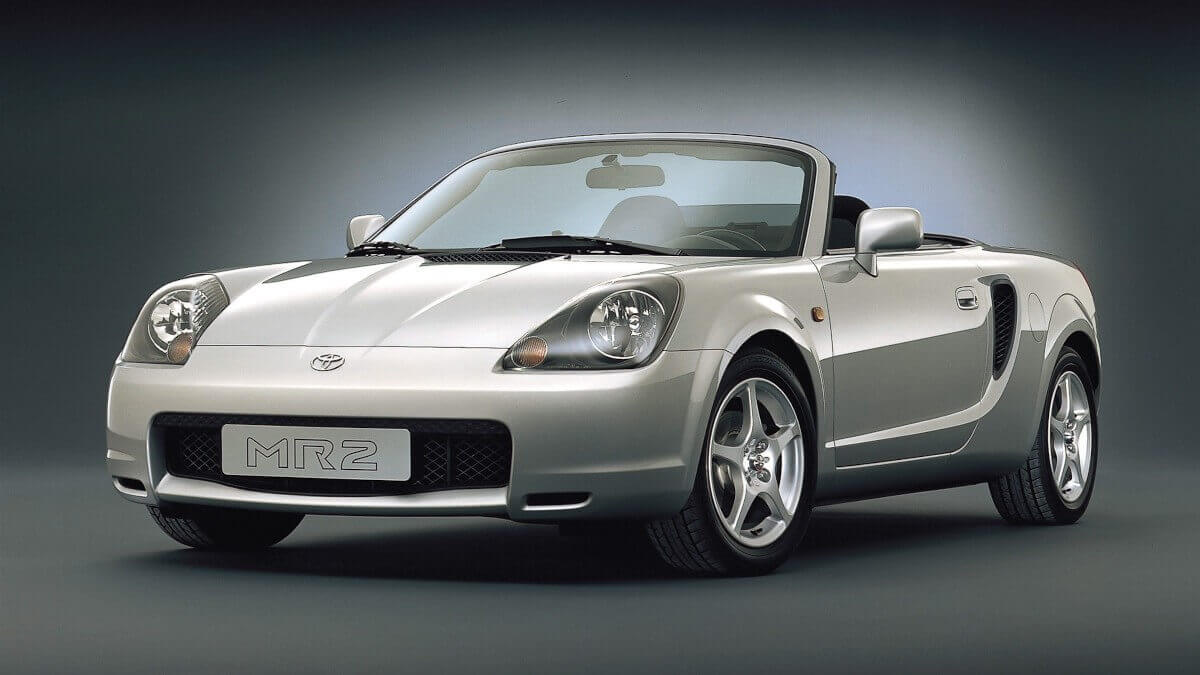

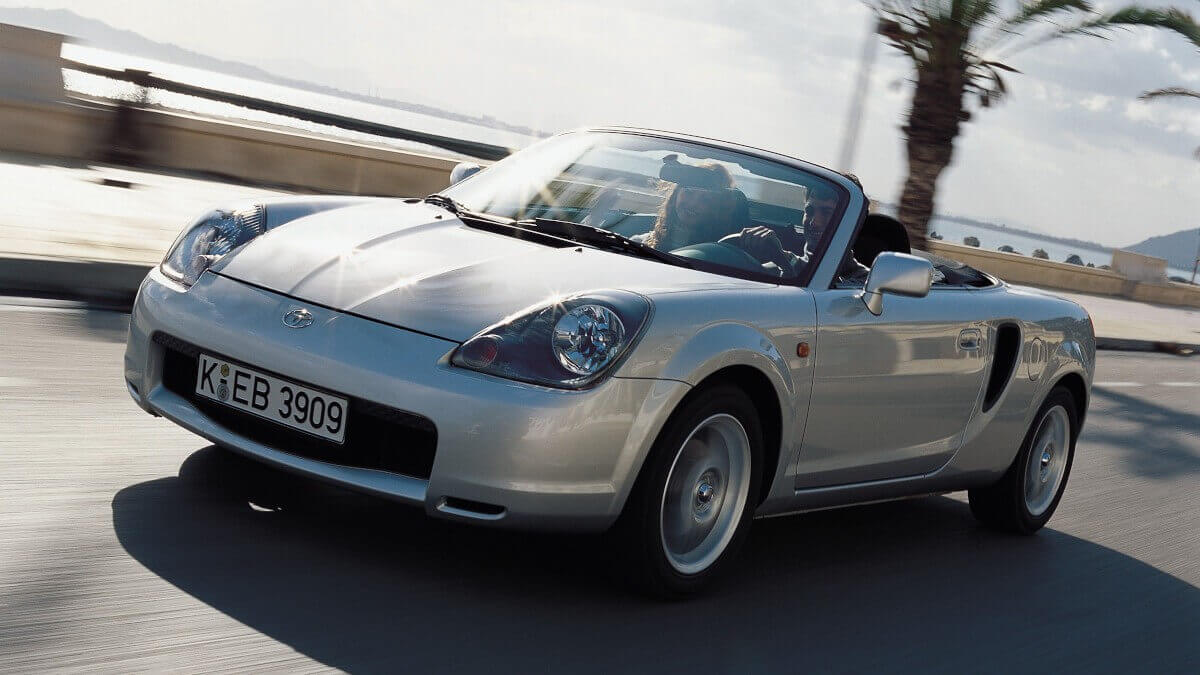



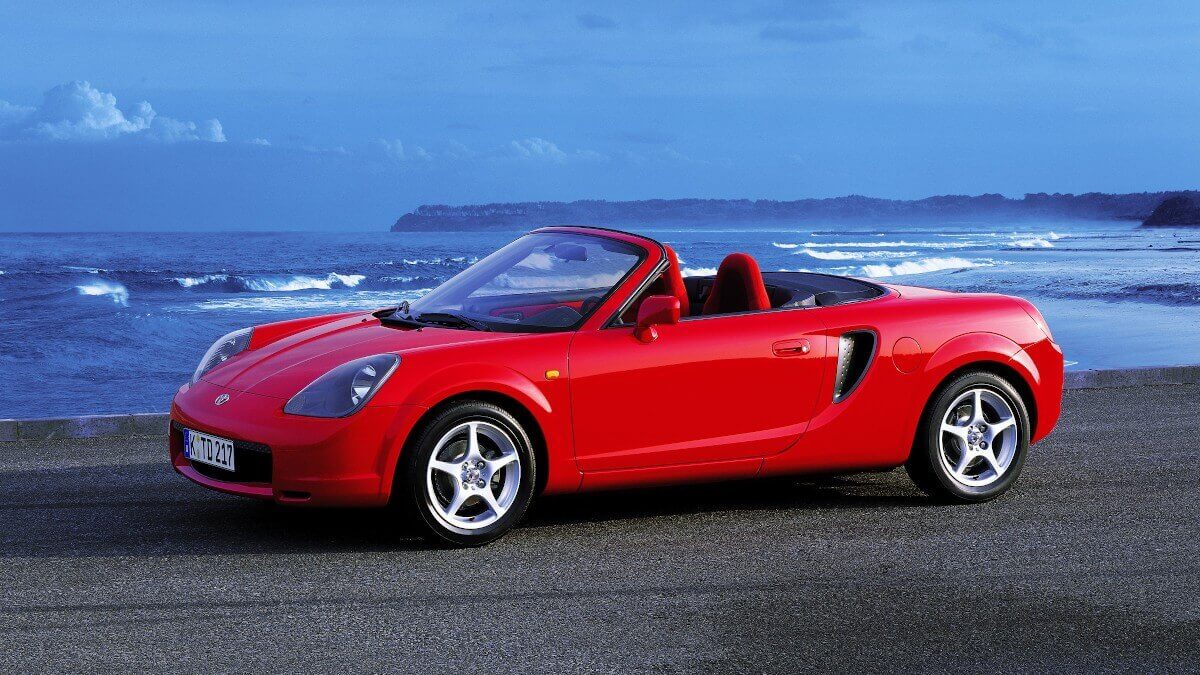

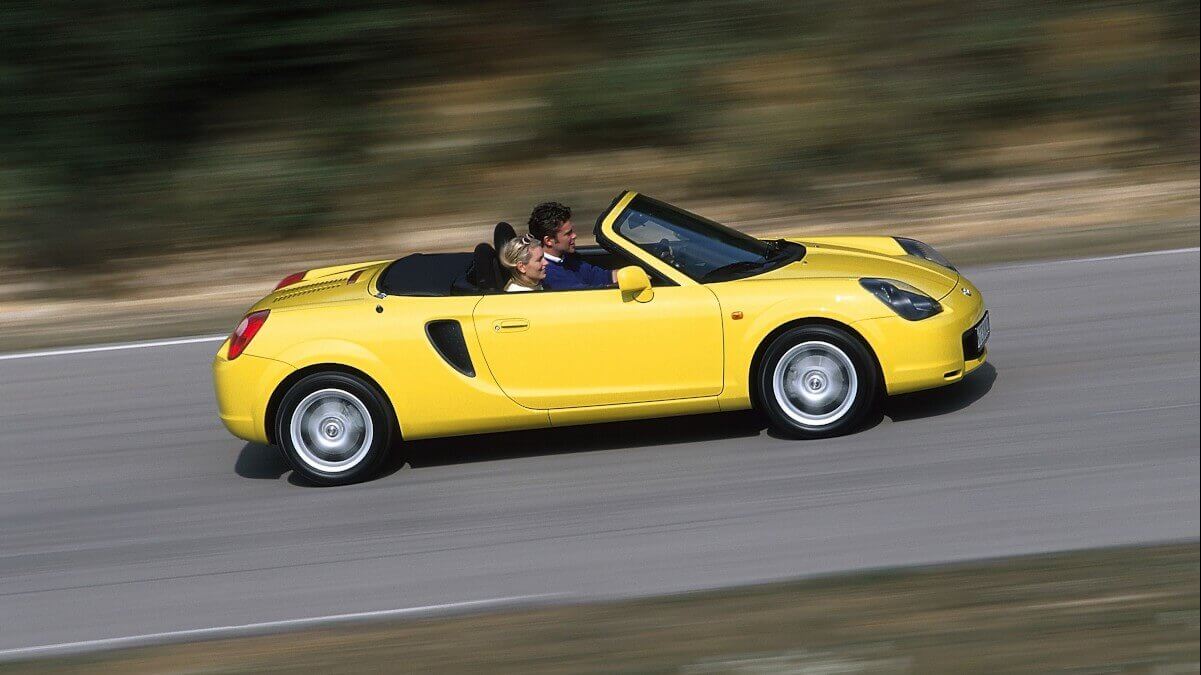

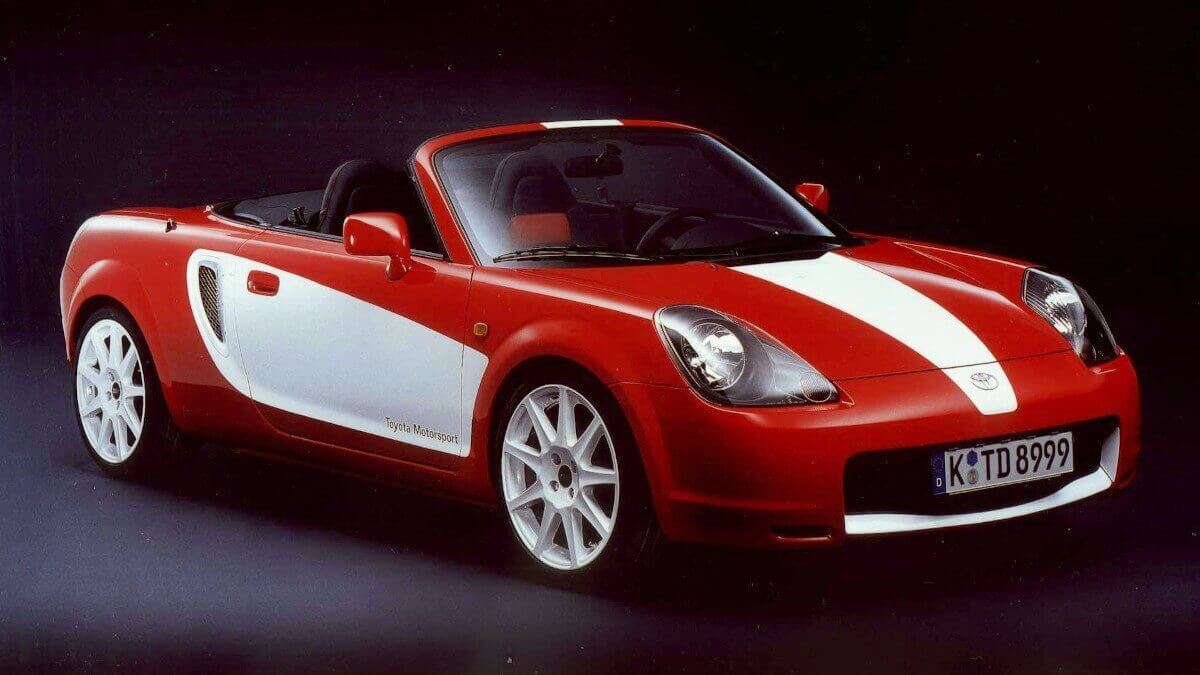

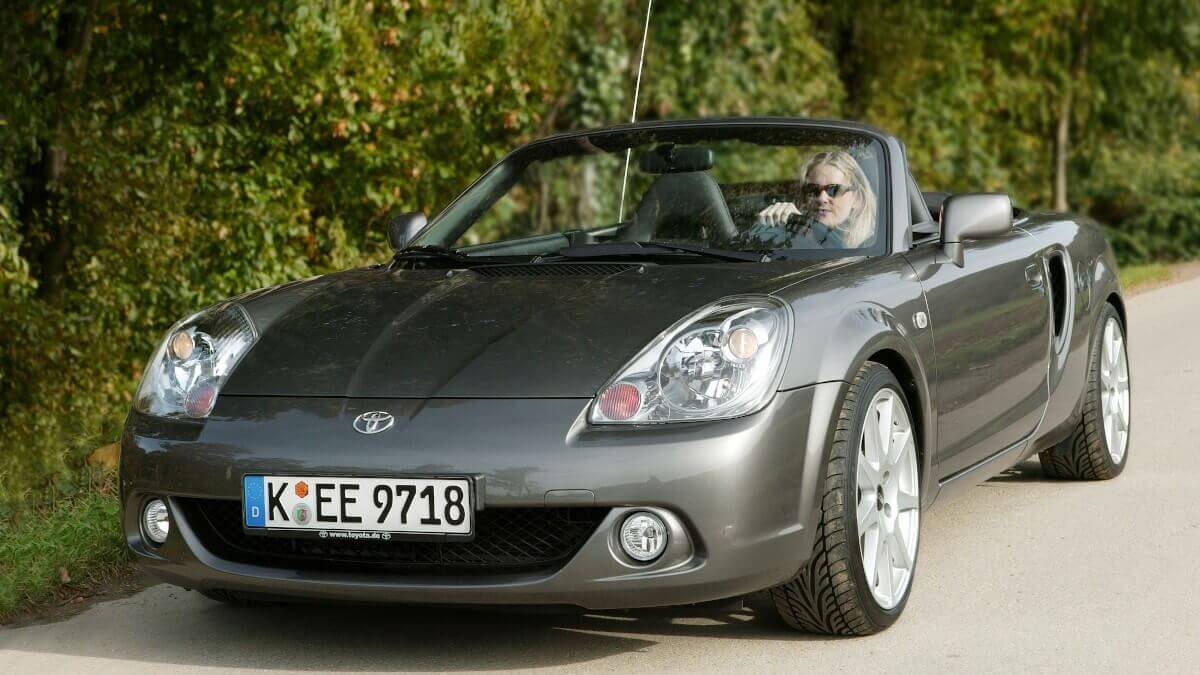

There were four different engine variants available worldwide, of which only the 1.6-liter naturally aspirated version made it to Germany. In the original configuration without a catalytic converter, this produced 91 kW/124 hp, and from 1987 this figure fell to 85 kW/116 hp when the cats were introduced as standard. Outside Europe, there was also an entry-level version with 1.5-liter carburettor engine with 61 kW/83 hp and, on some markets, the top version with 1.6-liter supercharged engine and 106 kW/145 hp was available. Also in some countries, a four-speed automatic transmission was available as an alternative to the standard five-speed manual gearbox. In Japan, the MR2 was named Car of the Year in 1984. Significantly more powerful was the 222D developed for the Group S World Rally Championship in 1987 at Toyota Motorsport in Cologne. Thanks to turbocharging it developed up to 600 hp and delivered them to an all-wheel drive system. When the motorsport authority FIA banned Group B due to some terrible accidents in 1986, they also banned the successor category Group S, which is why the MR2 222D never raced. Only three or four prototypes still exist today.
In 1989 the model change from the first MR2, internally called ‘W10’, to the ‘W20’ took place, which was developed as a Coupé (not available on all markets) and as a Targa with a T-top roof, i.e. two removable roof parts and a fixed roof bar in the middle. Between 1996 and 1999, Toyota TechnoCraft (TTC) also produced 91 units of an MR2 Spyder for the Japanese domestic market. In addition to naturally aspirated engines, there were also turbocharged engines with up to 180 kW/240 hp available, depending on the market. As early as 1995 at the Tokyo Motor Show, rumors were circulating that Toyota would discontinue one of its sports car series, i.e. MR2, Celica or Supra, and that there was a lot of indication that it would be smalles model of those three.
Nevertheless, chief engineer Tadashi Nakagawa and his team developed a new model generation behind the scenes, which was designed as a two-seater roadster for the first time. Apparently, this vehicle was also able to convince the management, as it was presented at the dealerships at the end of 1999. In the USA and Japan it bore the name MR-S (for Spyder). Toyota Team Europe (TTE), the motorsport department from Cologne/Germany, developed a retrofit turbo kit that helped to increase the power of the 1.8-liter four-cylinder engine from originally 103 kW/140 hp to 147 kW/200 hp. Equipped this way, the MR2 Roadster sped from a standstill to 100 kph (62 mph) in 5.9 seconds, which in 2005 was still on par with some supercars. Sales ended in 2004 (modelyear 2005) in the USA and in 2005 in Germany and some other European countries, while production for the world market continued until summer 2007. Plans for a fourth model generation never made it to the production stage, as sales of small sports cars had dropped sharply.
Images: Toyota


